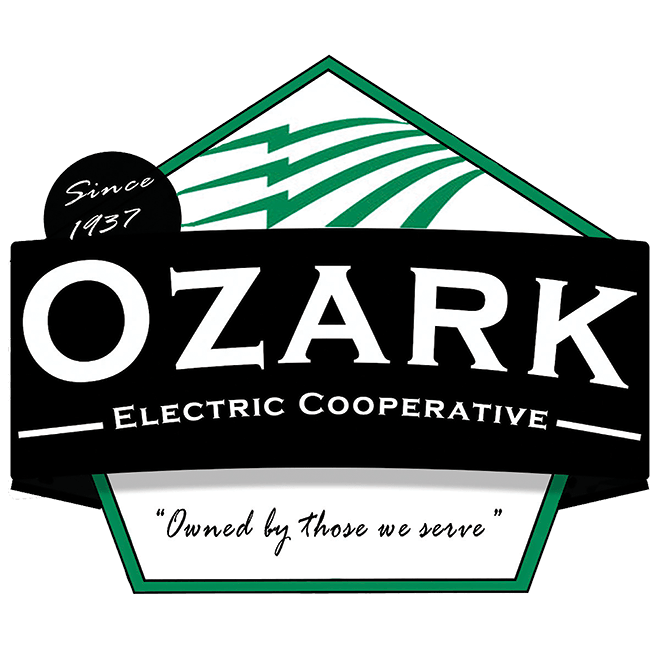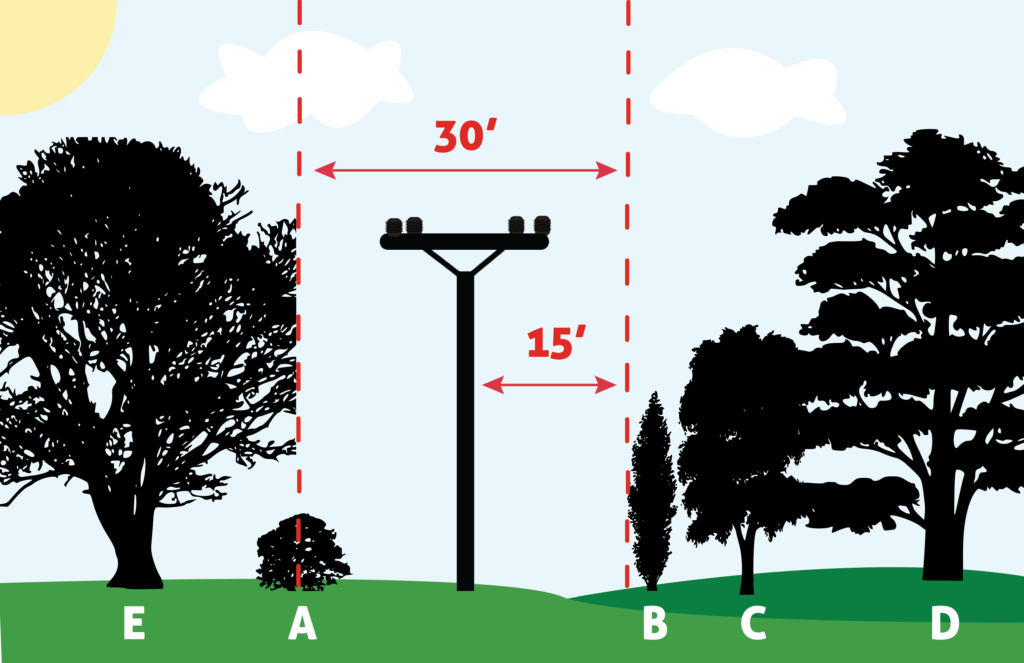Tree's a crowd!
We all appreciate trees. They beautify our property, cool our homes, provide privacy screens, and even sometimes increase our property value if placed properly. We also appreciate electricity, although sometimes we take it for granted. We expect, even demand, reliable electric service. Unfortunately, trees and power lines are not a good mix. Trees growing in power lines can cause blinks (short service interruptions), power outages, and can also be deadly to you and your children. Our desire for both trees and electricity can sometimes cause controversy when right-of-ways must be cleared to ensure safety and continuous power to our members.
Safety first & always
A very important reason for keeping the right-of-way clear is SAFETY. Accidents happen so quickly. Kids climbing trees can be a tragedy waiting to happen if they touch a limb in contact with an energized line or touch the line itself. The result can be severe injury or even death. Adults are also at risk if working around lines in trees. Ozark Electric Cooperative, like all utility companies, is required by, and willingly complies with National Electric Safety Code industry standards to keep trees out of power lines for safety reasons.
Lets not forget
Trees falling into power lines due to high wind or ice storms can knock power out to hundreds of consumers in a second. Not only do lines come down, but utility poles will snap due to the weight of fallen trees causing lengthy power outages. Pruning trees is only a temporary solution, because the trees will grow back. Therefore, trees must be permanently cleared using mechanical clear cutting and spraying methods. Not all storm related outages can be prevented (i.e. heavy ice-laden lines will fall; vehicles will slide and break poles, ect.) but we can certainly minimize the damage by keeping the right-of-ways clear. So when you see right-of-way crews out in the warmer weather months, please remember their work will help keep your power on during and in the aftermath of an ice storm or tornado.
It's the law
Ozark Electric Cooperative follows State laws governing right-of-way maintenance, specifically Missouri Revised Statute 537,340, allowing electric suppliers operating distribution lines the authority to maintain power line right-of-way by trimming, removing and controlling trees and other vegetation within 15 feet of either side of the centerline of electric lines. To read Statute 537.340 in its entirety,
Click Here
Ozark Electric Cooperative also teams with the American National Standards Institute and follows the ANSI 300 standards which are the generally-accepted industry standards for tree care practices. The ANSI's mission is to develop consensus performance standards based on current research and sound practice for managing trees, shrubs, and other woody plants.
It’s paying off
To assure our members’ safety and their continuous power supply, Ozark Electric Cooperative contracts professional right-of-way maintenance crews to clear nearly 4,800 miles of line using mechanical cutting and environmentally safe herbicide spraying methods each spring and summer. Ozark Electric Cooperative takes this responsibility seriously and has committed millions of dollars to right-of-way maintenance since the 1987 ice storm. Our records show this vigorous right-of-way program has paid off with average outages per member being reduced by half since we began.
The 15-foot rule
When trees grow too close to power lines, they cause potential safety hazards to humans and possible power outages. Ozark Electric Cooperative requires a clearance zone beneath and 15 feet on either side of the power line. Existing trees that grow into power lines in this zone will have to be sprayed, trimmed, or cut away to avoid power blinks and outages. Overgrown utility easements make the job of locating and fixing power outages more time consuming, costly, and even dangerous for our utility crews. By keeping the right-of-way clear, we can safely restore your power in less time.
SAMPLE Easement
Your help is needed
Carefully selected trees can make a beautiful landscape, provide shade in the warm months which lowers your energy bills, and reduce the need of right-of-way maintenance. You can help hold down cost and increase your power reliability by avoiding planting trees and bushes under or near power lines. By following the planting guidelines below and always calling the free 811 locate service before you dig, you will help us in our efforts to bring you safer, more reliable electric power. Give Ozark Electric’s right-of-way maintenance a call before planting trees if you have any questions about the types of trees to plant and where to safely locate them.

